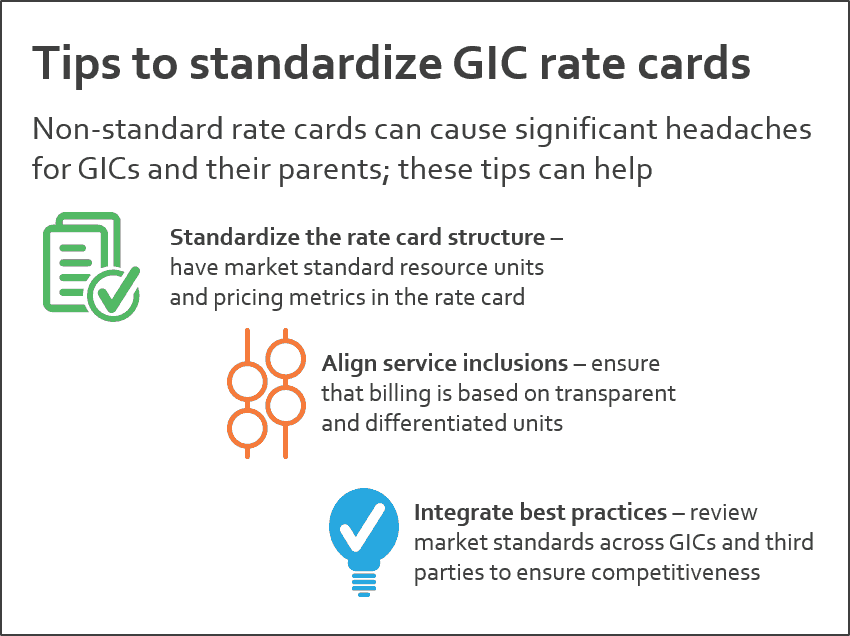
At a broad level, there are two models of IT management services – outsourcing to a third-party service or having a Global In-house Center (GIC).
While third-party outsourcing engagements have standardized rate cards in place, GICs often forego them, instead, charging their parent companies by actuals plus a small percentage overhead fee. While that usually works smoothly for the parent company and GICs, a non-standard rate card structure causes multiple drawbacks.
A non-standard rate card structure could be due to a couple of reasons
- Resource units are different than what is typically seen in the market. (For example, network pricing per site, which is typically charged per device.)
- Pricing includes services/cost components that are not part of that resource unit. For example, in a recent rate card, we saw that network services cost were being included in the desktop pricing.
Drawbacks of a non-standard rate card structure
- Low visibility into spend by function/tower: Having a non-standard rate card structure does not allow visibility into IT services spend. For example, in the case mentioned above where desktop pricing included network services costs, the parent company would not have a true estimate of its spend on either desktop or network services.
- Difficulty comparing with market and identifying optimization areas. Since the rate card structure is not aligned with the market, the parent company faces a significant challenge in comparing its spend across various IT functions with its peers. And obtaining even a top-level comparison with the market through an advisor becomes a comprehensive engagement.
- The go-to-market process becomes tedious. This one has implications for both the GIC and the parent company:
- GIC takes operations to the market: For example, one of our GIC clients wanted to take its services to the market for other clients. But, because its rate card was comprised mainly of non-standard resource units, it had no way to benchmark its pricing against the market. It engaged us to align its resource units to the market’s, estimate its pricing for market standard resource units, and then do a successful comparison. If the client had a standardized rate card in place, this entire tedious process could have been a short benchmarking exercise.
- Parent company and GIC separate: In another instance, a GIC had separated from its parent company to set up operations as a third-party service provider, and the parent company wanted to compare its pricing with other providers. The ex-GIC’s rate card, although mostly standardized in terms of resource units, had non-standard services/cost components in its resource unit pricing. Due to this, what could have been a very straightforward process became a time-consuming and intricate assessment of the cost of each resource unit’s component/service inclusion in order to do a successful apples-to-apples comparison.
What are some simple ways to achieve better consistency?
In light of the above drawbacks, every company with a GIC should follow these three steps:
- Standardize the rate card structure: They should have market-standard resource units and pricing metrics in the rate card.
- Service inclusions alignment: They should ensure that billing is based on transparent and differentiated units, and that no service mix-up is happening.
- Comprehensive review: They should review against market practices across GICs and third parties to ensure competitiveness.
These simple steps will unquestionably allow any parent company to have a better understanding of its spend breakdown and, hence, a better ability to identify optimization opportunities.











